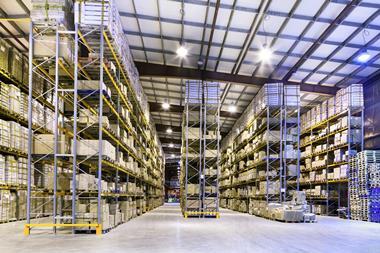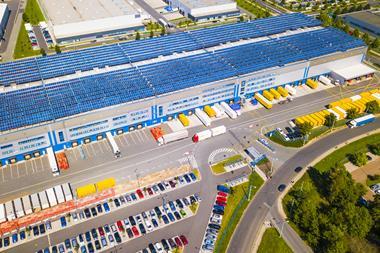Logistics and supply chain companies are increasingly concerned about the sustainability of their operations and the environmental performance of their warehouses. They have to be: customers are demanding greater levels of sustainability.

This applies across the board, from how their facilities are constructed to the impact on land use, water and infrastructure requirements, the transport movements generated and how the facility itself is equipped and operated. As labour becomes scarcer, many businesses are considering automating warehouse processes.
Applied appropriately, higher levels of automation should lead to greater efficiency, less waste and, therefore, a more sustainable operation. In practice, things are not quite so clear-cut. Automation that is poorly thought out or implemented with substandard equipment can have an impact on both operational and environmental performance.
However, a well-planned and implemented automation project can yield many sustainability benefits.
A big question is: should the automation be housed in an existing building or is a new building designed around the requirements of automation a more sustainable solution?
A new-build project obviously generates a lot of carbon and uses other resources in its materials and construction. Also, if built on a greenfield site, it will almost certainly have an impact on the environment, may affect drainage and groundwater levels and requires new infrastructure.

A new-build scheme can be designed to accommodate features such as solar panels, heat pumps, wind turbines, energy-conserving doorways, airlocks and insulation. But automation in an existing building may make better use of space, removing any need for physical expansion or a move away from the site.
Whether in a new building or a refurbished premises, automation can generate many other sustainability benefits. More accurate and timely order fulfilment can reduce the size of truck park required, and if fewer people are required to work on site, less space is needed for staff parking.
Moreover, automation can lend itself to – at least partial – ‘lights-out’ operation, if appropriate, saving considerable cost and energy.
Yet there are a range of sustainability issues to consider when selecting the technology.
Sourcing/procurement is one area to take up with the vendor or integrator. For example, are the machines and materials traceable to suppliers with acceptable records on their own sustainability, and how much power is consumed per unit of output?
Unpowered elements also matter. Conveyor components that have a low co-efficient of friction can make a huge difference. We know of an installation where low-friction belts saved 65% of power consumption, which, given there were seven miles of conveyor, amounted to 20% of the consumption of the whole building.
Taken altogether, the potential for automation to deliver sustainability and economic gains is clearly evident.
Craig Whitehouse is managing director of Invar Group





























No comments yet